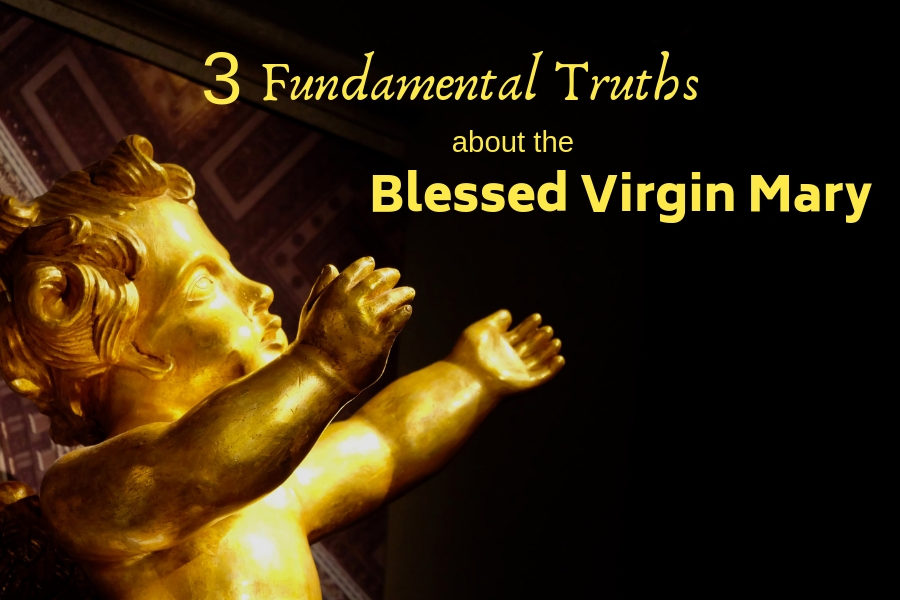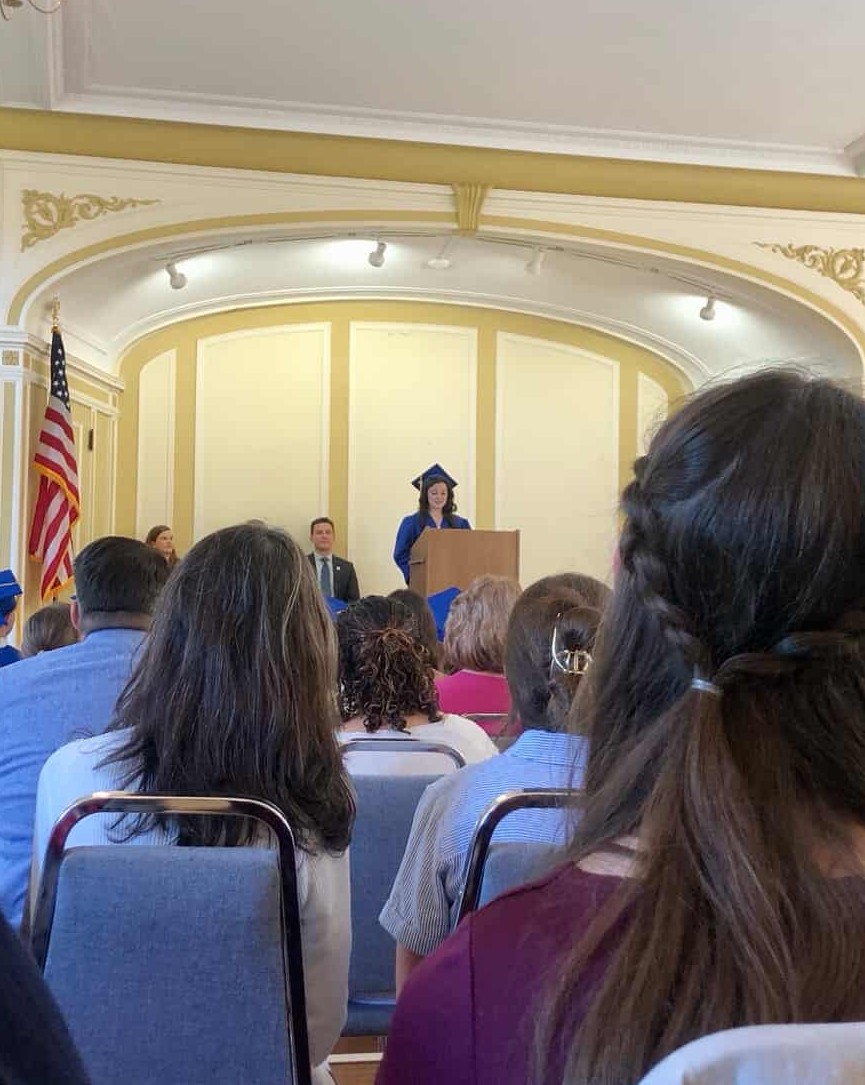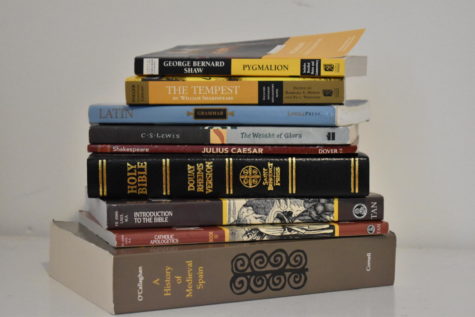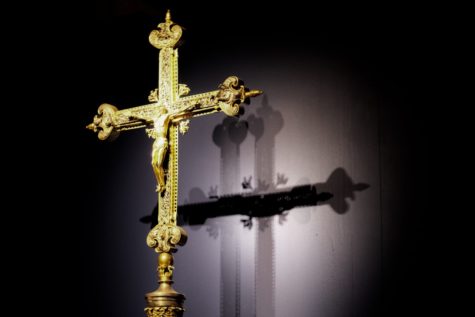3 Fundamental Truths about the Blessed Virgin Mary
Graphic by Gwynith Hayden using Canva.
January 29, 2019
There can be nothing more important than our faith, which is why it so important that we take every opportunity to study and contemplate it.
That’s why MODG News is so excited to share with you 3 Fundamental Truths about the Blessed Virgin Mary!
Mary’s Immaculate Conception
From Church Teaching
It is the doctrine of the Catholic Church that Mary, from the very moment of her conception in the womb of her mother, was free from every stain of original sin.
“We declare, pronounce, and define that the doctrine which holds that the most Blessed Virgin Mary, in the first instance of her conception, by a singular grace and privilege granted by Almighty God, in view of the merits of Jesus Christ, the Savior of the human race, was preserved free from all stain of original sin, is a doctrine revealed by God and therefore to be believed firmly and constantly by all the faithful.” – Pope Pius XII, Ineffabilis Deus
- “in the first instance of her conception…”
The wording of this statement is very precise, leaving no room for confusion.
“The first moment of the conception is that moment of time in which the soul was created by God and infused into the bodily matter prepared by her parents.” – Ludwig Ott, Fundamentals of Catholic Dogma
- “by singular grace and privilege…”
By this statement, it is clearly expressed that this is a “singular grace,” given to Mary alone, and “a privilege,” unmerited by Mary herself.
- “granted by Almighty God, in view of the merits of Jesus Christ, the Savior of the human race…”
Mary was redeemed by the sacrifice of Christ through the miraculous intervention of God.
“By the reason of her natural origin, she, like all other children of Adam, was subject to the necessity of contracting original sin… but by a special intervention of God, she was preserved from stain of original sin… Thus Mary also was redeemed ‘by the grace of Christ’ but in a more perfect manner than other human beings.” – Ludwin Ott, Fundamentals of Catholic Dogma
- “was preserved free from all stain of original sin…”
Mary was preserved from every effect of original sin by the graces of her Immaculate Conception.
Mary was also free from all actual sin by her willing cooperation with the graces of her Immaculate Conception.
“She was immune from all sin, personal or inherited.” – Pope Pius XII, Mystici Corporis
“No justified person can for his whole life avoid all sins, even venial sins, except on the ground of a special privilege from God such as the Church holds was given to the Blessed Virgin.” – The Council of Trent
- “…is a doctrine revealed by God and therefore to be believed firmly and constantly by all the faithful.”
This doctrine is infallible and every Catholic is required to believe it.
From Sacred Scripture
The primary scriptural passages utilized by the Church fathers and great theologians in stating this doctrine are found in the first chapter of the Gospel of Luke.
“Hail, full of grace!” (Lk 1:28)
The angel addresses Mary as being immaculately conceived in his greeting.
“Blessed art thou amongst women, and blessed is the fruit of thy womb.” (Luke 1:41)
Elizabeth calls Mary “blessed amongst women,” referring to the fact that Mary is immaculately conceived through the grace of God.
The Blessed Virgin had freedom from pain.
From Church Teaching
It is the sacred teaching of the Magisterium of the Church that Mary was free from original sin and all its effects.
“And indeed it was wholly fitting that so wonderful a mother should be ever resplendent with the glory of most sublime holiness and so completely free from all taint of original sin that she would triumph utterly over the ancient serpent.” – Pope Pius IX, Ineffabilis Deus
But, what are the effects of original sin?
The effects of original sin are defined by the Council of Orange as applying both to man’s body and his soul.
“it is the whole man, that is, both body and soul, that was ‘changed for the worse’ through the offense of Adam’s sin.” – Council of Orange
The particular effects of original sin on the body consist primarily in suffering and death. This doctrine is infallibly defined by the Council of Trent.
“If any one asserts, that the prevarication of Adam injured himself alone, and not his posterity… or that he, being defiled by the sin of disobedience, has only transfused death, and pains of the body, into the whole human race, but not sin also, which is the death of the soul; let him be anathema…” – The Council of Trent
It is the infallible teaching of the Church that Mary was free from every effect of original sin, one of those effects being suffering.
Therefore, Mary had freedom from suffering.
However, many point out the Seven Sorrows of Mary as an indication of the fact that she did suffer.
Mary chose suffering of her own free will, for the sake of mankind and of her Son, not because she had to suffer.
This is beautifully expressed in the words of the encyclical, Mystici Corporis.
“finally, bearing with courage and confidence the tremendous burden of her sorrows and desolation, she, truly the Queen of Martyrs, more than all the faithful ‘filled up those things that are wanting of the sufferings of Christ…for His Body, which is the Church’” – Pope Pius XII, Mystici Corporis
From Sacred Scripture
We also find evidence of the doctrine of Mary’s freedom from pain throughout Sacred Scripture.
In the Book of Genesis, we hear the effects of original sin pronounced to Eve.
“To the woman also he said: I will multiply thy sorrows, and thy conceptions: in sorrow shalt thou bring forth children, and thou shalt be under thy husband’s power, and he shall have dominion over thee.” (Genesis 3:16)
In the Gospel of Luke, we hear from the greeting of the angel that Mary was preserved from the effects of original sin.
“And the angel being come in, said unto her: Hail, full of grace, the Lord is with thee: blessed art thou among women.” (Luke 1:28)
There is a foretelling of Mary’s freedom from pain during Christ’s birth in the Book of Isaiah.
“Before she was in labour, she brought forth; before her time came to be delivered, she brought forth a man child.” (Isaiah 66:7)
Did the Blessed Virgin die?
From Church Teaching
The Church has not defined as a matter of doctrine whether Mary died or was directly assumed into Heaven.
However, the doctrine of the Assumption has been infallibly declared by the Church, regardless of whether or not Mary died.
“…by the authority of our Lord Jesus Christ, of the Blessed Apostles Peter and Paul, and by our own authority, we pronounce, declare, and define it to be a divinely revealed dogma: that the Immaculate Mother of God, the ever Virgin Mary, having completed the course of her earthly life, was assumed body and soul into heavenly glory.” – Pope Pius XII, Munificentissimus Deus
There are different traditions in the Western and Eastern Church concerning whether Mary died or was assumed directly into Heaven.
The Western Church tradition teaches that Mary died in order to be more like her Son, while the Eastern Church tradition teaches that Mary was assumed directly into Heaven, as was fitting for one conceived without sin.
The tradition of the Western Church is more universally accepted, although both are lawful opinions to hold.
“Nobody knows how she departed this world.” – Saint Augustine
“She, by an entirely unique privilege, completely overcame sin by her Immaculate Conception, and as a result she was not subject to the law of remaining in the corruption of the grave, and she did not have to wait until the end of time for the redemption of her body.” – Pope Pius XII, Munificentissimus Deus
Resources and Additional Information
If you are curious and would like to know more about these topics, we highly recommend to you these resources. Note: Infallible documents are starred.
Pope Pius XII, Munificentissimus Deus*
Pope Pius XII, Mystici Corporis*
Pope Pius IX, Ineffabilis Deus*
“Our Lady’s Physical Virginity in the Birth of Christ” by Fr. William Most
Ott, Ludwig, Fundamentals of Catholic Dogma, Tan Books and Publishers, © 1960





